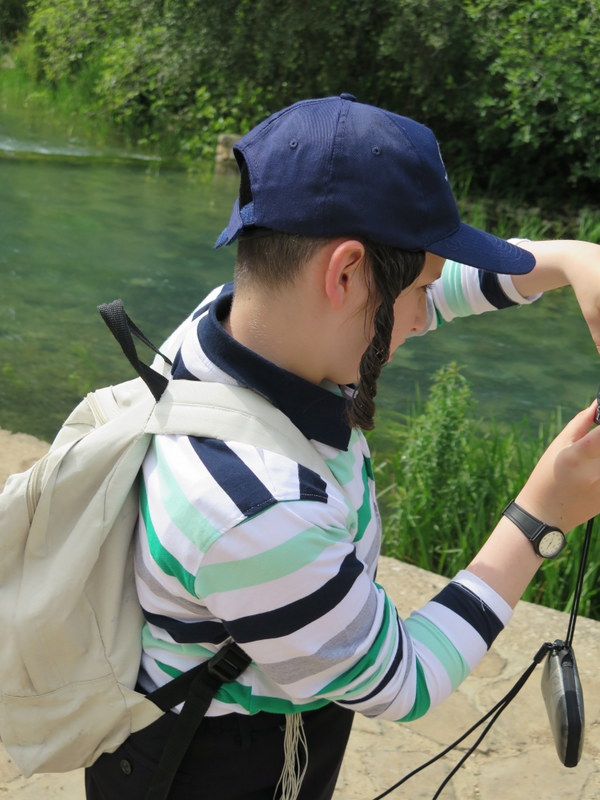Like Dan (two miles west), Banias guarded trade routes form Tyre to Damascus and also one of Jordan's sources, the Bania River, which run down to a spectacular waterfall.
The Banias Spring comes out of the foot of Mount Hermon and flows through a canyon leading to the 30-foot Banias waterfall, the longest such cascade in Israel. The Hermon Stream meets the Dan River farther along, and together they feed the Jordan River.
The area was lush and the weather was perfect. There are multiple trails through the entire park, and the shortest takes 10 or 15 minutes in each direction so with 20 minutes before we had to meet our group, some of us hiked down to the waterfall.
The site was originally named Panias after the Greek god, Pan. There are remains of a temple, some courtyards, a grotto and niches for rituals dedicated to the worship of Pan, dating to the beginning of the Common Era. Because there is no “p” sound in Arabic and the region was long under Syrian rule, the village that grew up around the spring came to be called Banias.
Niches in the cliff face were carved next to the cave and icons of their god, Pan, were installed.
According to the Gospels, it was in the Banias that the disciple Simon informed Jesus that people believed Jesus to be the Messiah. In response, Jesus renamed Simon “Peter,” which means “rock” in Greek — the rock upon which His church would be founded.
For Catholics, Peter was the first pope, so for pilgrims, the site helps them understand the environment in which this pivotal scene takes place. Caesarea Philippi remained important during the Christian Byzantine period. It was later conquered by the Muslims and then the Crusaders, then went back under Islamic rule and fell from its heyday.

Photo: Watercress. I haven't had fresh watercress in years and I couldn't help from having a sample.
This was definitely a beautiful place to visit and a great place to hike with families.




















My Oh My Oh My! Fascinating! Astounding! Gorgeous!
ReplyDelete